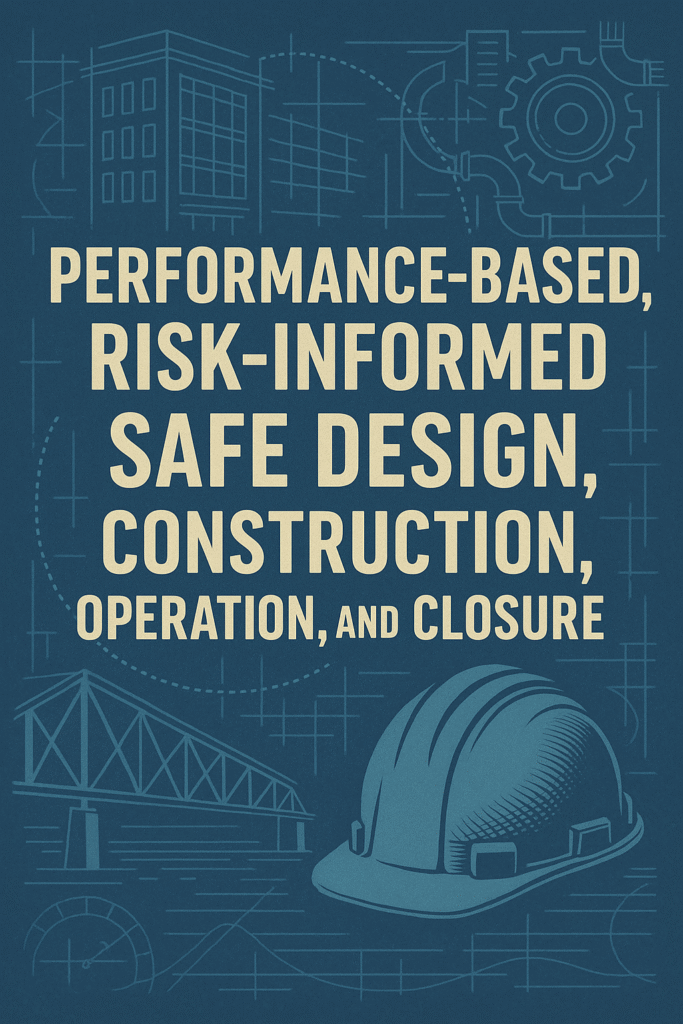
In his 2018 Victor de Mello Lecture, Professor Norbert R. Morgenstern addresses the pressing issue of tailings dam safety, highlighting recent catastrophic failures that have occurred despite advanced engineering practices and regulations. These incidents have eroded public trust and underscored the need for a more robust and accountable approach to tailings management.
To tackle this challenge, Morgenstern proposes the Performance-Based, Risk-Informed Safe Design, Construction, Operation, and Closure (PBRISD) framework. This approach emphasizes integrating risk assessment and performance monitoring throughout the entire lifecycle of tailings facilities, moving beyond prescriptive regulations to a system that adapts to specific project conditions and uncertainties.
Key Components of PBRISD:
- Qualified Operator (QO): Operators must commit to safety management systems aligned with best practices, such as those outlined in the Mining Association of Canada’s 2017 Guide. This includes appointing accountable executives, responsible persons, and an Engineer-of-Record.
- Independent Review Boards: Establishing risk-based classifications to determine the necessity and extent of external review boards, ensuring ongoing third-party oversight of geotechnical issues throughout the facility’s life cycle.
- Uncertainty Assessment and Risk Analysis: Conducting thorough evaluations of potential risks and uncertainties during the conceptual and feasibility stages, including Potential Problems Analysis (PPA) and Multiple Account Analysis (MAA).
- Design and Quality Management: Developing a comprehensive Design Basis Memorandum (DBM), implementing rigorous quality management systems, and maintaining detailed documentation to support decision-making and accountability.
- Operational Oversight: Ensuring that operations are conducted in accordance with the established design and risk management plans, with continuous monitoring and adjustments as necessary.
- Closure Implementation: Planning for closure from the outset, incorporating strategies to manage residual risks and ensure long-term stability and environmental protection.
Prof. Morgenstern emphasizes that the responsibility for implementing PBRISD lies primarily with operators, who must proactively develop and execute comprehensive tailings management systems. Regulators play a supportive role by reviewing and validating these systems, focusing on performance objectives and evidence-based assessments.
By adopting the PBRISD framework, the mining industry can enhance the safety and reliability of tailings facilities, rebuild public trust, and align with sustainable development principles. Morgenstern calls upon industry organizations, such as the International Council on Mining and Metals (ICMM), to support and facilitate the widespread adoption of this approach.
As I read these words, I can see this as being the precursor or even a catalyst to the GISTM, which is likely why Prof. Morgenstern was selected to be the Selected Advisor to ICMM’s Good Practice Guide. In that document, he recalled the following passage from the Mount Polley Expert Panel Report:
“Tailings dams are complex systems that have evolved over the years. They are also unforgiving systems, in terms of the number of things that have to go right. Their reliability is contingent on consistently flawless execution in planning, in subsurface investigation, in analysis, in construction quality in operational diligence, in monitoring, in regulatory action, and in risk management at every level. All of these activities are subject to human error”.
That’s a lot to think about.

